In this article, we’ll show several ways to check the license type and activation status of Microsoft Office 2022/2019/2016 and Office 365 copies on Windows computers. We’ll discuss how to use simple check in the graphical interface of Office apps and how to query remote computers using PowerShell
Checking the License Type and Activation Status of Office 2019/2016 or Office 365
After installing and activating Office 2022/2019/2016 or Office 365 (Microsoft 365) on your computer, you can make sure that your copy of Office is activated correctly in any application (Word, Excel, PowerPoint, Outlook) in the File -> Account section. The “Product Activated” caption indicates that your copy of Office is activated. If you see “Product Activation Required”, then your MS Office instance needs to be activated.
You can get more detailed information about the type and status of MS Office activation using the ospp.vbs command-line tool (this is a VBS script that is installed on your computer along with MS Office).
First of all, you need to know the bitness of your Office (32- or 64-bit). To do it, start any Office program (Word, Excel, Outlook) and select File -> Account -> About. The next window will show the bitness of your edition of Office (In our example, this is 64-bit).
Now you need to run an elevated command prompt and go to the directory, which path depends on the bitness and versions of your Windows and Office:
- If you are using Windows x64 and Office 32-bit (the most typical case):
CD "%SystemDrive%\Program Files (x86)\Microsoft Office\Office16 - Windows x86 and Office 32-bit:
CD "%SystemDrive%\Program Files\Microsoft Office\Office16" - Windows x64 and Office 64-bit:
CD "%SystemDrive%\Program Files\Microsoft Office\Office16"
Check Office activation status with the following command:
cscript ospp.vbs /dstatus
Take a close look at the output returned by the ospp.vbs command.
According to the information the tool provides, this Office 2016 copy is activated (LICENSE STATUS: —LICENSED—) on the KMS server (KMS machine name) using the GVLK for Office 2016 Pro Plus (Last 5 characters of installed product key).
The license will be valid for 176 days (REMAINING GRACE). If the KMS server is available, the license is automatically renewed for 180 days every 7 days (KMS Activation FAQ).
PRODUCT ID: 00339-10000-00000-AA224 SKU ID: d450596f-894d-49e0-966a-fd39ed4c4c64 LICENSE NAME: Office 16, Office16ProPlusVL_KMS_Client edition LICENSE DESCRIPTION: Office 16, VOLUME_KMSCLIENT channel BETA EXPIRATION: 01.01.1601 LICENSE STATUS: ---LICENSED--- REMAINING GRACE: 176 days (253510 minute(s) before expiring) Last 5 characters of installed product key: WFG99 Activation Type Configuration: ALL KMS machine name from DNS: woshub.com:1688 KMS machine registry override defined: woshub.com:1688 Activation Interval: 120 minutes Renewal Interval: 10080 minutes KMS host caching: Enabled
The results may contain:
LICENSE NAME: Office 16, Office16O365ProPlusR_Grace edition LICENSE DESCRIPTION: Office 16, RETAIL (Grace) channel LICENSE STATUS: ---OOB_GRACE--- ERROR CODE: 0x4004F00C ERROR DESCRIPTION: The Software Licensing Service reported that the application is running within the valid grace period.
This means that the copy of Office 365 on your computer is activated in evaluation mode (trial mode).
The license type is specified in the LICENSE NAME string. In this example, this is Office 16, Office16ProPlusVL_KMS_Client edition. It means you have a volume licensed version of MS Office 2016 ProPlus installed on your computer.
- MAK edition — MAK activation key is used;
- Retail edition – a retail product activated using a retail key;
- Subscription (TIMEBASED_SUB channel) – subscription-based version of MS Office (time-based).
If the command returns <No installed product keys detected>, then there are no Office licenses on this device.
Check Office Activation Status via PowerShell
You can list the Office licenses installed on a computer using the following PowerShell command:
Get-CimInstance SoftwareLicensingProduct| where {$_.name -like "*office*"}|select name,licensestatus
In this example, the command returned that there are two Office licenses installed on the computer, one of which is activated (LicenseStatus = 1).
For convenience, you can convert the activation status code into something more readable.
enum Licensestatus{
Unlicensed = 0
Licensed = 1
Out_Of_Box_Grace_Period = 2
Out_Of_Tolerance_Grace_Period = 3
Non_Genuine_Grace_Period = 4
Notification = 5
Extended_Grace = 6
}
Get-CimInstance -ClassName SoftwareLicensingProduct | where {$_.name -like "*office*"}| select Name, ApplicationId, @{N='LicenseStatus'; E={[LicenseStatus]$_.LicenseStatus}}
Get-AzureADUser -ObjectId maxb[email protected] | Select -ExpandProperty AssignedPlans
You can get the activation status of MS Office from a remote computer:
Get-CimInstance -ComputerName PC33220de SoftwareLicensingProduct| where {$_.name -like "*office*"}|select name,licensestatus
In an Active Directory domain, you can get the activation status of Office on remote computers using a simple PowerShell script. You can create a list of active computers in a specific OU by using the Get-ADComputer cmdlet from the PowerShell Active Directory module. Then you can query the activation status of Microsoft Office licenses for each of them.
enum Licensestatus{
Unlicensed = 0
Licensed = 1
Out_Of_Box_Grace_Period = 2
Out_Of_Tolerance_Grace_Period = 3
Non_Genuine_Grace_Period = 4
Notification = 5
Extended_Grace = 6
}
$Comps=Get-ADComputer -Filter {enabled -eq "true"} -Filter -SearchBase ‘OU=Munich,OU=DE,DC=woshub,DC=com’
$result=@()
Foreach ($comp in $comps)
{
If ((Test-NetConnection $comp.name -WarningAction SilentlyContinue).PingSucceeded -eq $true)
{
$result+= Get-CimInstance -ClassName SoftwareLicensingProduct -ComputerName $comp.name| where {$_.name -like "*office*"}| select PSComputerName,Name, ApplicationId, @{N='LicenseStatus'; E={[LicenseStatus]$_.LicenseStatus}}
}
}
$result|Out-GridView
The results can be exported to the Out-GridView cmdlet.
This PowerShell script will allow you to get the activation status of Office on all computers on your network.
Removing Office 365/2016 Activation Popup: Let’s Get Started
In some cases, even on a fully activated version of Office 2016/2019/365, you can see the following popup when trying to start any Office app:
Choose one
- Try – Get a free trial of Office 365
- Buy – Buy Office from the Microsoft Store
- Activate – Enter your Product Key or sign in
You can close this window, and that doesn’t limit any Office features, but it appears every time when you start any Office app, which is terribly annoying. I could find out how to remove this activation popup window.
As it turned out the problem is related to the preinstalled Office 365 that had been uninstalled to install Office 2016 instead. I tried to use the removal tools offered on the Microsoft website to remove this window, but they didn’t help.
The only working method is to remove the registry keys (depending on the bitness of the system):
- HKEY_LOCAL_MACHINE\SOFTWARE\Wow6432Node\Microsoft\Office\16.0\Common\OEM
- HKEY_LOCAL_MACHINE\SOFTWARE\Microsoft\Office\16.0\Common\OEM
It is faster to do it with PowerShell:
Remove-Item –Path “HKLM:\SOFTWARE\Wow6432Node\Microsoft\Office\16.0\Common\OEM” –Recurse
Remove-Item –Path “HKLM:\ SOFTWARE\Microsoft\Office\16.0\Common\OEM” –Recurse
Just close all Office applications and start them again. The Office activation notification will disappear.
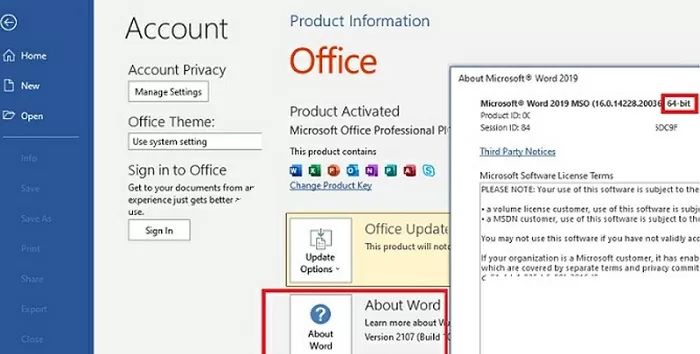
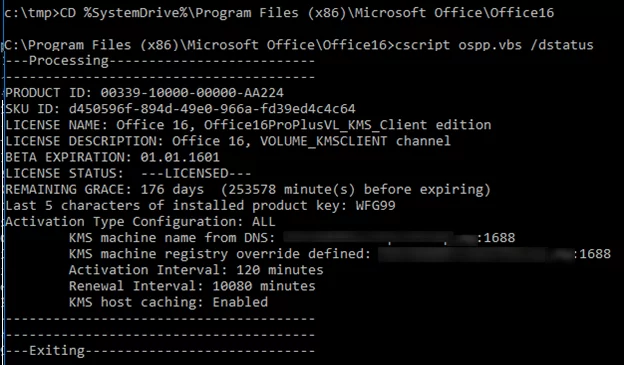
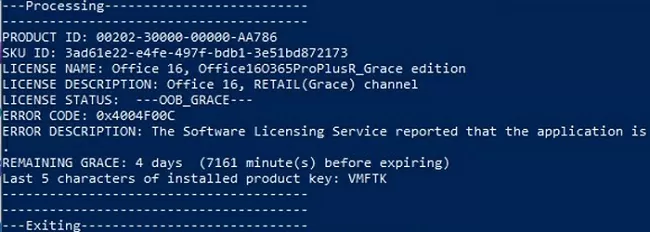




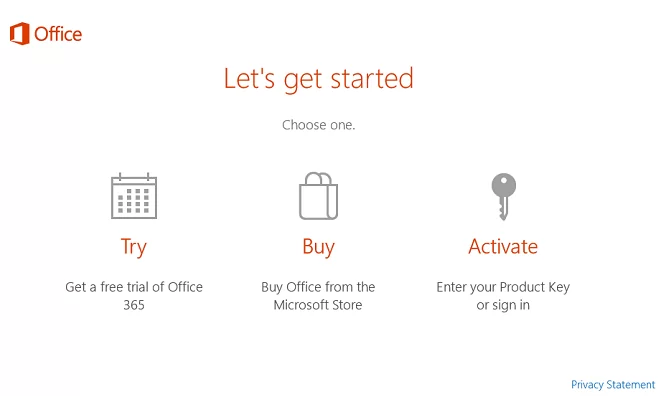
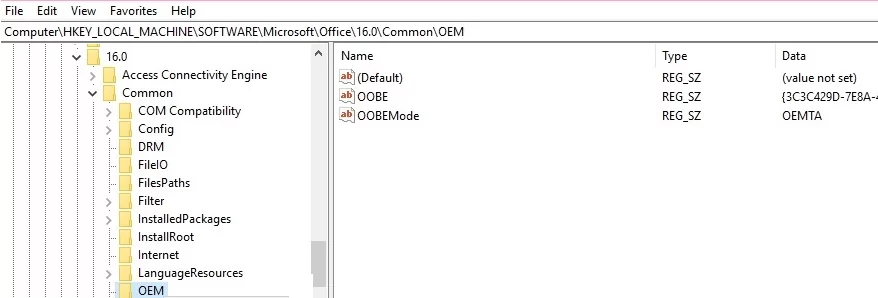
3 comments
While removing activation notification In regedit there is no oem folder. How to fix it?
First time I’ve seen a listing of the old office licenses on my machine using Get-CimInstance SoftwareLicensingProduct, any idea of how to delete the unwanted ones?
Can anybody shed light on this question from Microsoft Community?
Link here: https://answers.microsoft.com/en-us/msoffice/forum/all/product-activated-not-showing-in-office-after/e51aea8d-e305-4e47-8785-75cceddb68c4